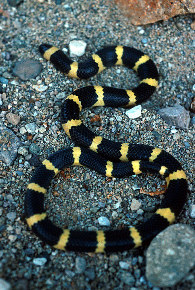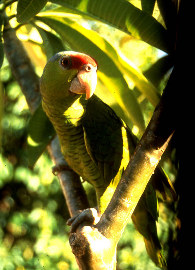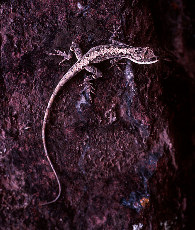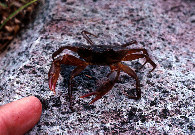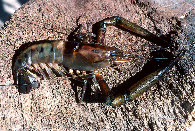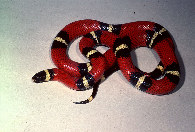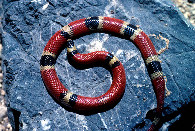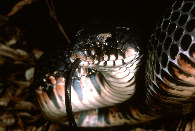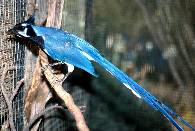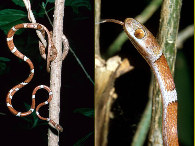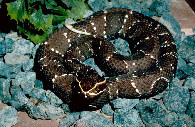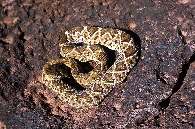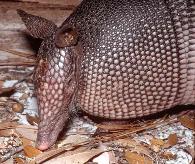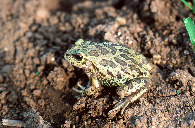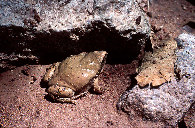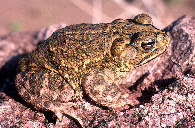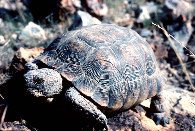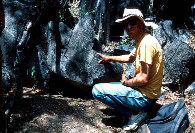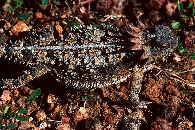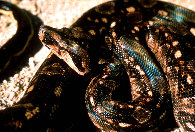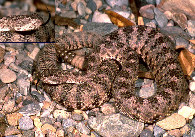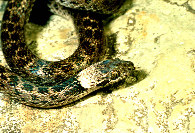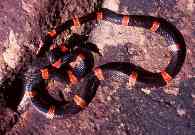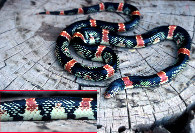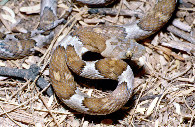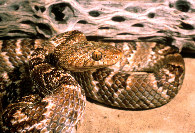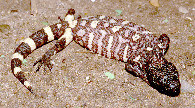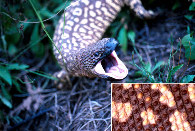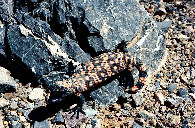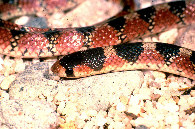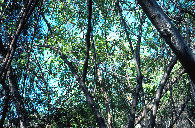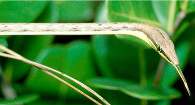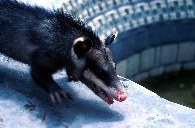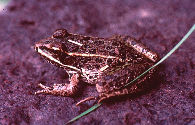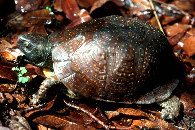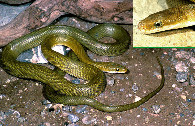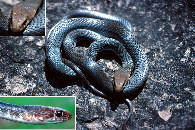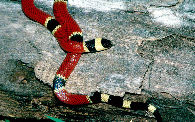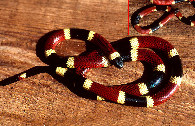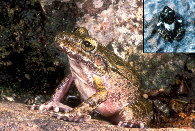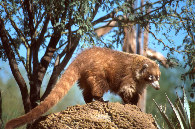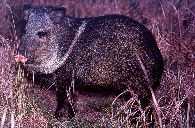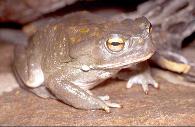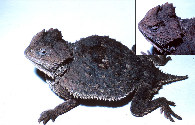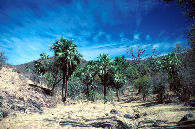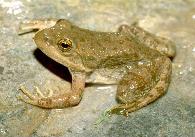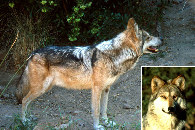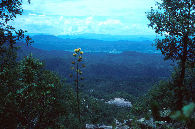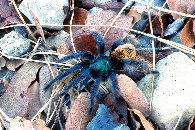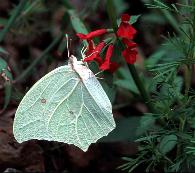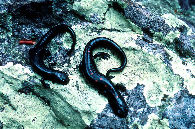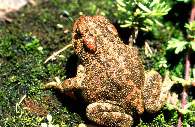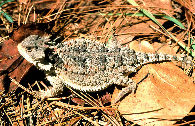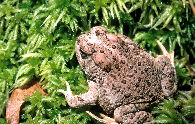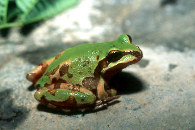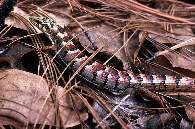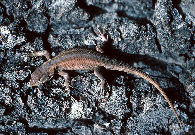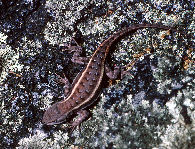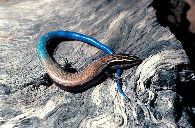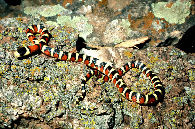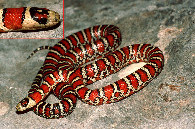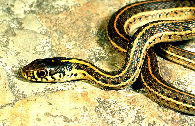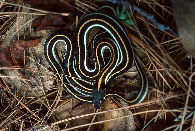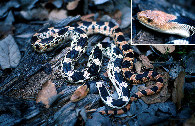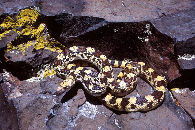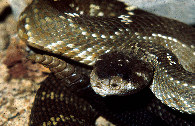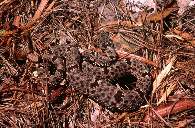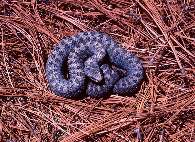Research in the Sierra Madre Occidental of Eastern Sonora, Mexico:
Noteworthy Animals in the Yécora Area Tropical Deciduous Forest Animals Some animals found in TDF range into other habitats. TDF animals that are also found in thornscrub and the Sonoran Desert include the lowland burrowing treefrog (Pternohyla fodiens), Sinaloan narrow-mouthed toad (Gastrophryne olivacea mazatlanensis), Mazatlán toad (Bufo mazatlanensis), desert tortoise (Gopherus agassizi; Bury et al. 2002), regal horned lizard (Phrynosoma solare), boa constrictor (Boa constrictor), night snake (Hypsiglena torquata), tiger rattlesnake (Crotalus tigris), and others (Schwalbe and Lowe 2000). In some animals like the long-nosed snake (Rhinocheilus lecontei), the TDF-thornscrub transition is an intergrade zone between TDF and thornscrub-desertscrub subspecies. In the lyre snakes two well marked species (Trimorphodon tau and T. biscutatus) hybridize freely at the TDF-thornscrub transition. The venomous escorpiones (Helodermatidae) are the only venomous lizards in the world. In southern Sonora, the beaded lizard (Heloderma horridum) is replaced by the Gila monster (H. suspectum) the TDF-thornscrub transition. The northern range limits of some TDF animals such as the thornscrub hook-nosed snake (Gyalopion quadrangularis) and the brown vine snake (Oxybelis aeneus) are at 1160 to 1650 meters elevation in desert grassland/oak woodland transition in the mountains of southern Arizona west of Nogales (Van Devender et al. 1994). Some animals like the Mexican subspecies of the Virginia opossum/tlacuache (Didelphis virginiana californicus) that are widespread in tropical northwestern Mexico have expanded their ranges northward onto Arizona in the last 60 years (Hoffmeister 1986). Cold-tolerant tropical animals: A surprising number of warm-loving tropical animals have been seen at higher, colder elevations in the Yécora area in the Sierra Madre Occidental in eastern Sonora including spotted box turtle (Terrapene nelsoni), green rat snake (Elaphe triaspis), and neotropical whipsnake (Masticophis mentovarius). The west Mexican coral snake (Micrurus distans) and the western coral snake (Micruroides euryxanthus) also occur in oak woodland/grassland near Maycoba. The barking frog (Eleutherodactylus augusti) as well as coatimundi/cholugo (=chulo, solitario, Nasua narica), ringtail (Bassariscus astutus), and collared peccary/jabalí (Tayassu tajacu) were seen up to in pine-oak forest at 2200 m elevation on Mesa del Campanero (Davis 1982, Harris 1985, Hofmeister 1986). Cold-Tolerant Tropical Animals
Woodland and forest fauna: A number of animals are primarily found in the woodlands and forests of the Sierra Madre Occidental above the tropical lowlands. Some of them are Mexican species while others also occur in the Madrean sky island ranges in southeastern Arizona, or are more widespread in the southwestern United States. The pine-oak salamander (Pseudoeurycea bellii sierraoccidentalis) is a very rare salamander described from about 21 km west-southwest of Yécora old the old road to Santa Ana (Lowe et al. 1968, Van Devender et al. 1989a, 1989b). Other Sierran animals include the Madrean green tarantula (Aphonopelma moorei; Smith 1994), pine toad (Bufo occidentalis), Mexican toad (B. microscaphus mexicanus), mountain treefrog (Hyla wrightorum), Sierra Madre horned lizard (Phrynosoma orbiculare), short-horned lizard (P. hernandesi), Madrean alligator lizard (Elgaria kingii), bunch grass lizard (Sceloporus scalaris), striped plateau lizard (S. virgatus), and four-lined skink (Eumeces tetragrammus callicephalus). Rattlesnakes are always fascinating. The forests and woodlands of the Sierra Madre Occidental and the Madrean Sky island mountains in northeastern Sonora and southeastern Arizona are well known rattlesnake hotspots. The dark brown Madrean black-tailed rattlesnake (C. molossus nigrescens) is the large víbora de cascabel in the Sierra Madre in eastern Sonora and western Chihuahua. The small montane species of rattlesnakes (Crotalus lepidus, C. pricei, and C. willardi) are called chichámoras in the Yécora area in eastern Sonora. Caire, W. 1978. The distribution and zoogeography of the mammals of Sonora, Mexico. Ph.D. diss., University of New Mexico, Albuquerque. Davis, G. P., Jr. 1982. N. B. Carmony and D. E. Brown (eds.). Man and Wildlife in Arizona: The American Exploration Period 1824-1865. Arizona Game And Fish Department, Scottsdale, Arizona. Harris, A. H. 1985. Late Pleistocene Vertebrate Paleoecology of the West. University of Texas, Austin. Hoffmeister, D. F. Mammals of Arizona. University of Arizona Press, Tucson. Lowe, C. H., and C. W. Howard. 1975. Viviparity and reproductive pattern in Phrynosoma ditmarsi in Sonora, Mexico. The Southwestern Naturalist 20:265-270. Lowe, C. H., and C. W. Howard. 1971. A population of Phrynosoma ditmarsi from Sonora, Mexico. Lowe, C. H., C. J. Jones, and J. W. Wright. 1968. A new plethodontid salamander from Sonora, Mexico. Contributions in Science, Los Angeles County Museum of Natural History 140: 1-11. McBride, R. T. 1980. The Mexican wolf (Canis lupus baileyi). A. Historical review and observations on its status and distribution. Report to U.S. Fish and Wildlife Service, Albuquerque, NM.McBride, R. T. 1980. The Mexican wolf (Canis lupus baileyi). A. Historical review and observations on its status and distribution. Report to U.S. Fish and Wildlife Service, Albuquerque, NM Miller, G. S., and R. Kellogg. 1955. List of North American recent mammals. U. S. National Museum Bulletin 205, Washington, D.C. Nowak, R. H. 1974. The gray wolf in North America, a preliminary report. Reprt to the New York Zoological Garden and U.S. Bureau of Sport Fisheries and wildlife. Perrill, R. H. 1983. Phrynosoma ditmarsi. Herpetological Review 14:123. Russell, S. M. 2000. Birds of the tropical deciduous forest. Pp. 200-244 in R. H. Robichaux and D. A. Yetman (eds.) The Tropical Deciduous Forest of Alamos, University of Arizona Press, Tucson. Russell, S. M., and G. Monson. The Birds of Sonora. University of Arizona Press, Tucson. Schwalbe, C. R., and C. H. Lowe. Amphibians and reptiles of the Sierra de Alamos. Pp. 172-199 in R. H. Robichaux and D. A. Yetman (eds.) The Tropical Deciduous Forest of Alamos, University of Arizona Press, Tucson. Siminski, D. P. 2002. International studbook for the Mexican gray wolf (Canis lupus baileyi). Arizona-Sonora Desert Museum, Tucson, AZ. Smith, A. R. 1994. Study of the Theraphosidae Family from North America. Volume 2. Tarantulas of the USA and Mexico, pp. 123-124. Stejneger, L. 106. A new species of Phrynosoma from Mexico. Proceedings of the U. S. National Museum 29:565-567. Van Devender, T. R., and R. Conant. 1990. Pleistocene forests and copperheads in the eastern United States and the historical biogeography of New World Agkistrodon. Pp. 601-614 in H. K. Gloyd and R. Conant, Snakes of the Agkistrodon Complex: A Monographic Review. Society for the Study of Amphibians and Reptiles Monographic Series, Oxford, Ohio. Van Devender, T. R., C. H. Lowe, and H. E. Lawler. 1994. Factors influencing the distribution of the neotropical vine snake Oxybelis aeneus in Arizona and Sonora. Mexico. Herpetological Natural History 2:27-44. Van Devender, T. R., and C. H. Lowe. 1977. Amphibians and reptiles of Yepómera, Chihuahua, Mexico. Journal of Herpetology 11:41-50. Van Devender, T. R., P. A. Holm, and C. H. Lowe. 1989. Pseudoeurycea bellii sierraoccidentalis (pine-oak salamander). Life history notes; habitat. Herpetological Review 20: 48-49. Woodin, W. H. 1950. Notes on Arizona species of Thamnophis. Herpetologica 6:39-40. Woodin, W. H. No date. Ecology and geographic variation of the Arizona mountain kingsnake. Unpublished manuscript.
* Department of Ecology and Evolutionary Biology, University of Arizona, Tucson.
|
|









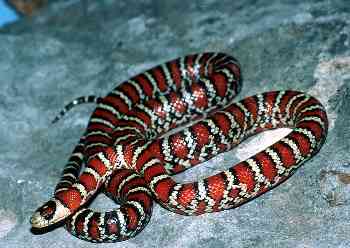 The Desert Museum has not conducted a formal study of the animals of southeastern Sonora. However, Museum biologists are general natural historians and have seen many animals on hummingbird and plant trips that are interesting ecological or distributional records. Observations of live and dead animals were documented with color photographs and local residents were interviewed about the local fauna and Spanish common names along the Tónichi-Yécora hummingbird observation transect as part of the
The Desert Museum has not conducted a formal study of the animals of southeastern Sonora. However, Museum biologists are general natural historians and have seen many animals on hummingbird and plant trips that are interesting ecological or distributional records. Observations of live and dead animals were documented with color photographs and local residents were interviewed about the local fauna and Spanish common names along the Tónichi-Yécora hummingbird observation transect as part of the 